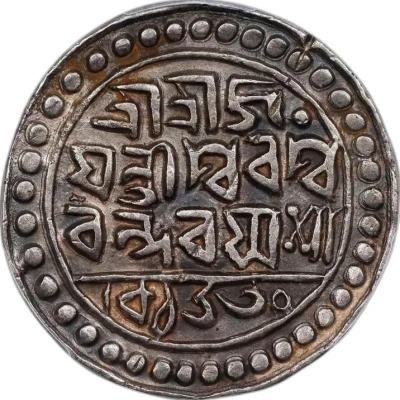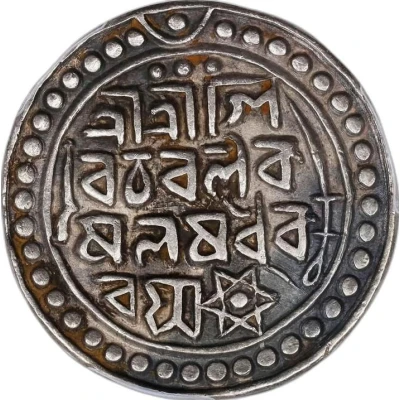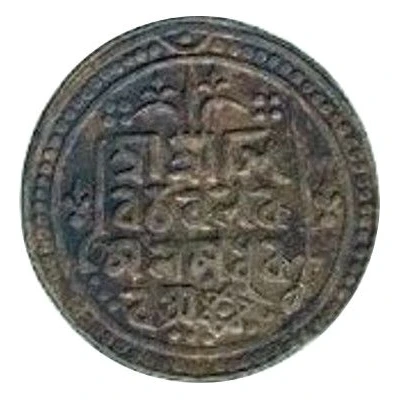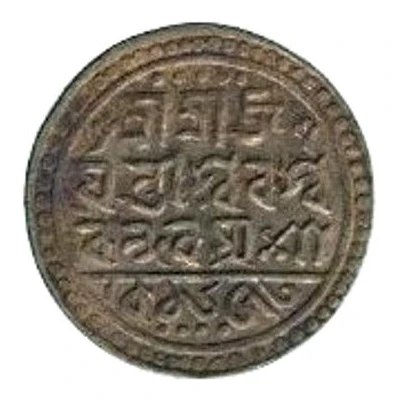


© Stacks Bowers
1 Rupee - Jaya Narayan
1630 (1708) year| Silver | 10 g | - |
| Issuer | Jaintia Kingdom (Indian North-Eastern Dynasties) |
|---|---|
| King | Jay Narayan Syiem Sutnga (1708-1731) |
| Type | Standard circulation coin |
| Year | 1630 (1708) |
| Calendar | Nepal - Saka era |
| Value | 1 Rupee |
| Currency | Rupee |
| Composition | Silver |
| Weight | 10 g |
| Shape | Round |
| Technique | Milled |
| Orientation | Medal alignment ↑↑ |
| Demonetized | Yes |
| Updated | 2024-10-05 |
| Numista | N#420739 |
|---|---|
| Rarity index | 100% |
Reverse
Lettering describing date and state.
Script: Devanagari
Edge
Plain
Comment
Weight varies, with later issues dipping to the mid 7 grams range. The State of Jaintaipur was a state at what is now the border of Bangladesh and India. It often fought long wars against Assam and later the British. Raja Jaya Narayan Syiem Sutnga ruled from 1708 to 1731, the 16th in his dynasty.
Interesting fact
One interesting fact about the Jaya Narayan 1630 (1708) silver rupee coin from the Jaintia Kingdom is that it features a unique blend of Indian and Southeast Asian design elements. The coin's obverse side features a depiction of the Hindu goddess Lakshmi, while the reverse side features a stylized rendition of the Jaintia Kingdom's emblem, which includes a pair of elephants flanking a throne. This blending of cultural influences reflects the rich cultural heritage of the Jaintia Kingdom, which was located in the Indian northeastern state of Meghalaya and was a key center of trade and commerce between India and Southeast Asia during the 17th and 18th centuries.

